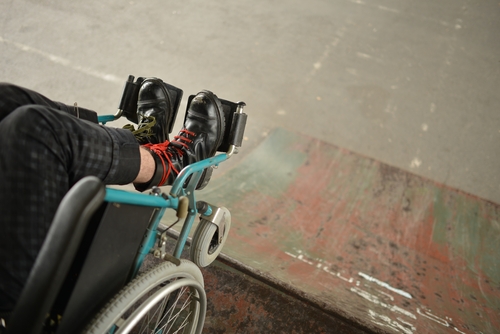Nerve Mobility May Be Indicator of Motor Function in Children with CP

Tests of sciatic nerve mobility in children with cerebral palsy (CP) — partly measured by a “straight leg rise” (SLR) — are relevant measures of likely mobility issues in these patients, and should be included in a clinical analysis, researchers report. They suggest that further study is needed to determine if increasing nerve mobility could help to improve mobility-related functions and activities.
The study, “The Relevance Of Nerve Mobility On Function And Activity In Children With Cerebral Palsy,” was published in the journal BMC Neurology.
Impaired movement or elasticity of the nervous system can provoke pain or restrict movement. Previous studies have shown that a physical therapy known as neural mobilization can reduce stiffness in adult patients with these symptoms.
Children with CP often experience muscle weakness, stiffness or spasticity, and have joint deformities that, together, hamper their movement and can lead to greater restrictions later in life.
Researchers wondered if nerve mobility was relevant to likely motor performance in pediatric patients, and hypothesized that a positive SLR test can be used to predict reduced motor function, capacity, and performance in children with CP.
“[R]esearch about neural structures and their influence on functional limitations and recovery in children with neurological disorders is scarce,” they wrote.
They followed 30 children, with ages ranging from six to 18, who could communicate and extend their knee against resistance. The team collected data on SLR, leg muscle strength, Gross Motor Function Measure (GMFM-66), and number of activity counts during daily life for each child.
Results showed that a positive SLR test did indeed distinguish between children with low or high muscle strength and GMFM-66 scores. Moreover, the SLR hip angle correlated significantly with the level of disability and with muscle strength.
“A positive SLR (nerve as limiting factor) or negative SLR (other structures such as muscle length) was able to distinguish between children with higher and lower motor function, capacity and performance with acceptable sensitivity, and specificity,” the authors wrote.
“The results of this study showed a relationship between mobility related functions, activities, and participation and restrictions of nerve mobility in children with CP,” they concluded. “Therefore, integration of neurodynamic assessments to the clinical reasoning process might provide an additional view to observe and treat mobility limitations in children with CP.”
More studies are warranted to understand whether improving nerve mobility can have a positive impact on function in children with CP.


